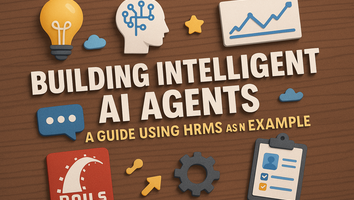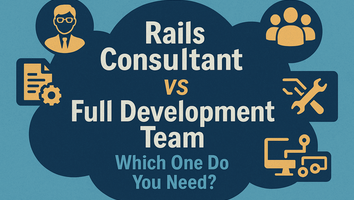To assist engineering and product teams in creating autonomous AI systems, OpenAI has released A Practical Guide to Building Agents, a thorough and technically insightful manual. Grounded in real-world implementations, the guide offers a step-by-step approach to selecting appropriate use cases, designing agent architecture, and implementing strong safety mechanisms to ensure reliability.
What is an AI Agent?
Unlike standard LLM-based tools like basic chatbots or classifiers, agents are autonomous systems capable of performing multi-step tasks with limited human involvement. These agents combine reasoning, memory, tool usage, and workflow management to function effectively.
Each agent typically consists of three core elements:
- Model: The big language model in charge of reasoning and judgment.
- Tools: The functions or external APIs that the agent employs to carry out tasks.
- Instructions: Structured instructions that direct the behavior, actions, and goals of the agent.
When to Use an AI Agent
AI agents are best suited for workflows that extend beyond the limits of traditional, rule-based automation. Ideal use cases include:
- Complexdecision-making: For example, handling nuanced refund decisions in customer service.
- High-maintenance logic systems: Such as compliance workflows that are rigid or hard to scale.
- Dealing with unstructured data: Including document analysis or conversational
interactions.
The guide emphasizes that the need for agent-level reasoning should be carefully assessed before beginning development.
Technical Insights and SDK Usage
OpenAI’s Agents SDK offers a developer-friendly, code-first environment using Python to build and manage agents. Developers can define agents by combining model selection, tool integration, and structured prompts.
OpenAI divides tools into three categories:
- Data tools – Used for retrieving information from databases or document sources.
- Action tools – Used to update records or trigger services.
- Orchestration tools – Additional agents are available as modular functions.
To create scalable and maintainable systems, the guide suggests crafting modular,
templated prompts with clearly defined variables.
Agent Orchestration Models
OpenAI details two main architectural strategies for agent orchestration:
- Single-Agent Architecture: A self-contained agent that completes a task loop, ideal
for simpler workflows. - Multi-Agent Architecture:
○ Manager Model – A central agent gives specialized sub-agents tasks to do.
○ Decentralized Model – Agents collaborate and transfer control dynamically.
Both approaches enable flexible task flows while promoting modularity and maintainability
through function-based design.
Implementing Guardrails for Safety
The guide stresses the importance of layered security to prevent issues like data exposure, misuse, or inappropriate output. Key measures include:
- LLM-based classifiers – To oversee the safety, relevance, and sensitive data ofcontent.
- Rules-based filters – Using regex, input limits, and blacklists for input/output validation.
- Tool sensitivity levels – Rating tools by risk level and restricting their use accordingly.
- Output checks – Validating that the AI agent outputs meet tone, policy, and
compliance standards.
Real-time detection and control are enabled by these safeguards, which are integrated into the runtime.
Human-in-the-Loop Strategies
Understanding that even advanced AI agents may encounter ambiguity or make errors, OpenAI advocates for human oversight through:
- Failure thresholds – Triggering escalation after repeated tool errors or missteps.
- High-risk tasks – Routing critical or irreversible decisions to human supervisors.
Such approaches ensure safer, phased rollouts and allow users to build confidence in the system over time.
Final Thoughts
OpenAI provides a comprehensive framework for the development of AI agents that are intelligent, controlled, and ready for production in this guide. By combining powerful LLMs with specialized tools, clear prompt design, and comprehensive safety layers, teams can evolve from experimental bots to full-scale automation systems.
Whether it’s customer support, document automation, or development workflows, this guide serves as a practical foundation for implementing AI agents in real-world applications. OpenAI suggests starting small with single-agent systems and expanding to multi-agent setups as project complexity grows.



